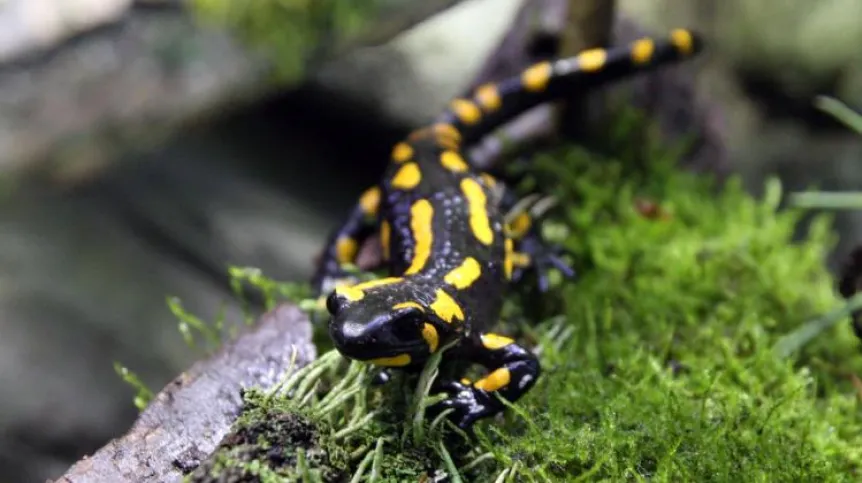
B. salamandrivorans, a fungus that threatens salamanders in Europe, has been discovered on the border of the Netherlands, Belgium and Germany. Biologists from Poland, the Czech Republic and Slovakia tested more than 1000 tailed amphibians from 6 European countries and found a new outbreak in Spain. Tested amphibians from Poland turned out to be healthy.
The research results and the detection of new sites of the dangerous pathogen have been reported to PAP by one of the authors of the analyses, a biologist from the University of Wrocław Krzysztof Kolenda. He reminds that in recent years there has been more talk about the massive decline of biodiversity. Amphibians are becoming extinct faster than any other vertebrates in the world. According to recent estimates, half of the species described to date are threatened with extinction. The reasons for their disappearance are attributed to human activity. These include the spread of invasive species, overcatching of populations (for consumption or breeding purposes), environmental destruction and pollution, climate change and the spread of infectious diseases.
One of the most dangerous diseases of amphibians is chytridiomycosis caused by two fungi of the Chytridiomycota division: Batrachochytrium dendrobatidis (Bd) and B. salamandrivorans (Bsal). Chytridiomycosis causes skin disease called hyperkeratosis, as well as water balance disorders, decrease of electrolyte transport in the epidermis, poisoning with fungal toxins, and, as a consequence, death of amphibians.
B. salamandrivorans seems to be extremely dangerous for European tailed amphibians, especially the fire salamander. Its appearance in the Netherlands led to the death of 99 percent salamanders in the infected population. So far, its presence in the natural environment has been confirmed at the border of the Netherlands, Belgium and Germany, where it causes the extinction of further populations. The origin of the fungus in Europe is associated with the trade of exotic amphibians imported from Asia, where it is a native species.
Scientists from Poland, the Czech Republic and Slovakia presented the results of their research on the new detections of B. salamandrivorans in Europe in the July issue of the prestigious journal "Emerging Infectious Diseases".
The team examined a total of 1135 tailed amphibians from six European countries: Spain, Montenegro, Croatia, the Czech Republic, Slovakia and Poland. "We detected B. salamandrivorans in five palmate newts from northern Spain. In addition, all amphibians were tested for the presence of another dangerous pathogen, B.dendrobatidis. It was confirmed in 11 newts (palmate, smooth and northern crested newts) from Spain and Montenegro and in sword-tail newts from a Czech breeding" - reports Krzysztof Kolenda.
The material from Poland consisted exclusively of fire salamanders. "We examined over 300 individuals from 13 populations along the entire range of the species occurrence in Poland: from Bogatynia in the west to the Otryt range in the Bieszczady Mountains. Fortunately, all tests gave a negative result" - the authors inform.
"This is an important result that will allow us to have a broader picture of the occurrence of parasitic fungi in Poland. While we know that B.dendrobatidis is present in our country and may cause mortality among green frogs, and so far there has been no data on the second pathogen" - emphasises Krzysztof Kolenda.
In order to prevent new pathogens from entering our country, scientists warn against buying exotic amphibians from uncertain sources and, above all, Asian species sourced from catches.
"In addition, all of us, especially people often staying on the water - anglers, naturalists, etc. - can limit the spread of already present fungi (B.dendrobatidis). Remember that without a clear cause (such as emergency help) you should not catch amphibians in your hands (in Poland, all species of amphibians are under protection and such activities without special permit are prohibited), and after returning from the water, shoes and used equipment should be well dried, preferably in the sun" -- reads the release sent to PAP.
zan/ kap/
tr. RL













